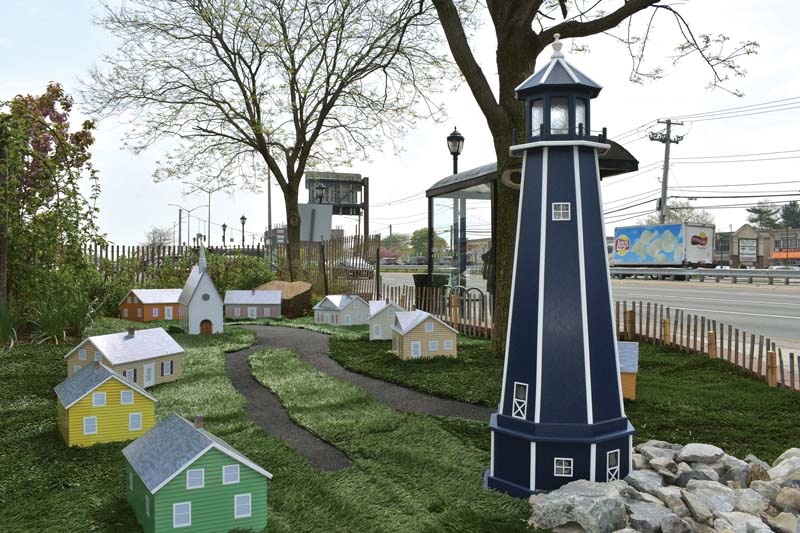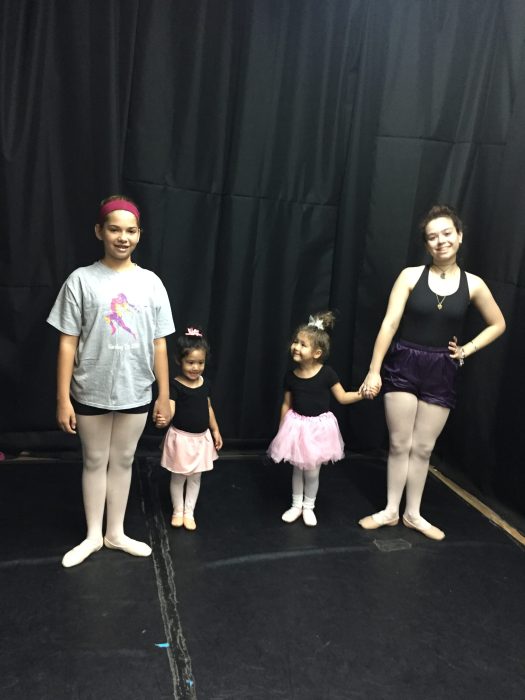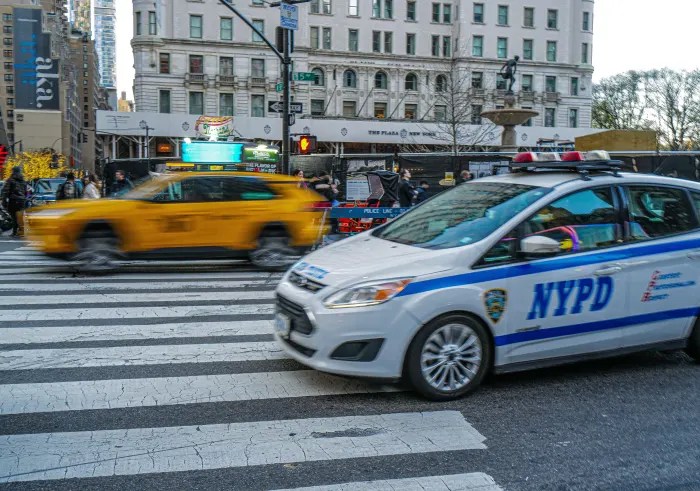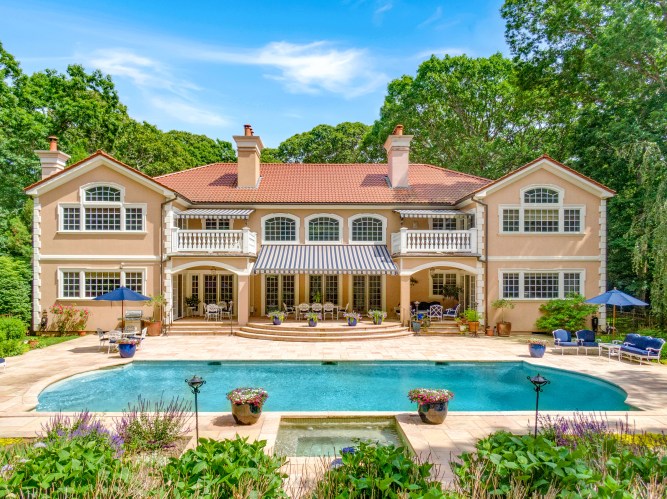
(Photos by Joseph Wolkin)
At the time William Levitt built Levittown on Long Island, the real estate developer didn’t know what it would mean for American suburbia.
The idea of Levittown, mass-producing affordable houses for veterans who just returned from World War II in the late 1940s and early 1950s, was unheard of. However, he did it.
Now, Levittown consists of more than 50,000 residents. And because of its growth, a handful of residents came together to do something unique, something unheard of, like Levitt himself.
“The signs that they were going to throw out, we used that material for the houses,” Councilman Dennis Dunne Sr. said. “I said, ‘What are we going to do here?’ Let’s dress it up a bit. Why not make a little village?”
 “Little Levittown” as it’s been coined, is literally Levittown. It has the Levitt-style homes, a church, streets, fences and much more. Sitting on the corner of Division Avenue and Hempstead Turnpike, those passing by can’t miss the blue lighthouse, especially when the sun sets and solar energy emits light from within its midst.
“Little Levittown” as it’s been coined, is literally Levittown. It has the Levitt-style homes, a church, streets, fences and much more. Sitting on the corner of Division Avenue and Hempstead Turnpike, those passing by can’t miss the blue lighthouse, especially when the sun sets and solar energy emits light from within its midst.
The lighthouse was inspired by one coated in white just down the block. It even has stones, which the federal government provided at no cost, surrounding it. The Levitt houses surround the lighthouse, with mini roads and artificial turf, making it seem like a real town.
“The committee from the gazebo—the ‘Gazebo Gang we call them—came over here and became the ‘Lighthouse Gang,’” Dunne said. “It’s almost no cost to the taxpayers. Is it beautiful or what?”
Everything in “Little Levittown” was donated by local members of the community. The Town of Hempstead Parks Department, led by Commissioner Daniel Lino, helped out as well. Whenever workers had some downtime, they headed over to the island and put it together.
The homes were built by Jamie Tintle, a carpenter in Levittown whose father was also in the industry. It was a way for him to give back to his community.
Dunne has even bigger plans for “Little Levittown.”
“This is an electrical box,” he said. “We’re going to put a brick wall here (surrounding an electrical box) and leave an entrance so the workers can get to it. On this wall, we’re going to put a mural of May’s Department Store that was on the end [where Tri-County is now]. On the other side of the wall, there will be a mural of Division Avenue High School. I told the principal, why don’t you get the mascot, the dragon, to do a picture for the yearbook?”
on the end [where Tri-County is now]. On the other side of the wall, there will be a mural of Division Avenue High School. I told the principal, why don’t you get the mascot, the dragon, to do a picture for the yearbook?”
Dunne’s plan is to allow Division Avenue students to design and paint the mural in conjunction with classes. He already has one idea that he’s pitching to General Douglas MacArthur High School.
“I’m asking the schools to get students involved,” he said. “The school district’s shop class might be able to do this as part of projects and they can get graded on it.”
But there are concerns that the property will be destroyed. Currently, there are just small wooden barriers that people can easily climb over and walk onto the property. Dunne wants to add tall wood iron to protect the island, which is owned by the Town of Hempstead. The parks department will frequently be checking on it to make sure it isn’t vandalized.
“Kids used to walk across this area, but now they can’t because they’ll ruin all of it,” Dunne said. “We’re going to try to get wood iron when a building is getting sold or something, take the wood iron and put it here. Or if the town has wood iron somewhere—if it’s not being used—let’s put it to use.”
This project comes less than a month after the gazebo across the street at the Levittown Veterans Memorial Park was unveiled. The new gazebo is topped with a red roof. It has a beautiful sign that reads, “Levittown Veterans Gazebo,” featuring the red, white and blue of the American flag, donned with a star from Old Glory on each side.































